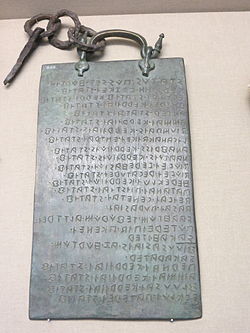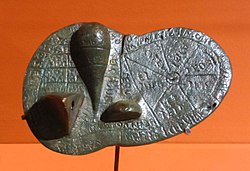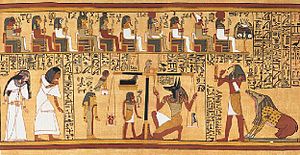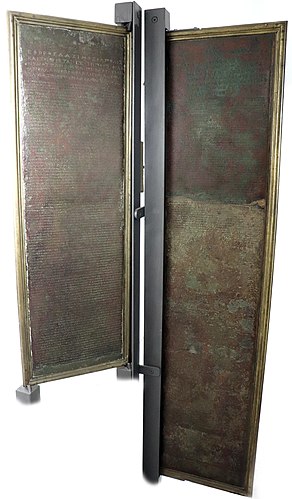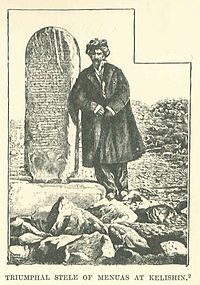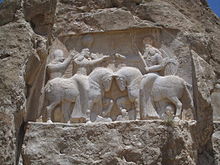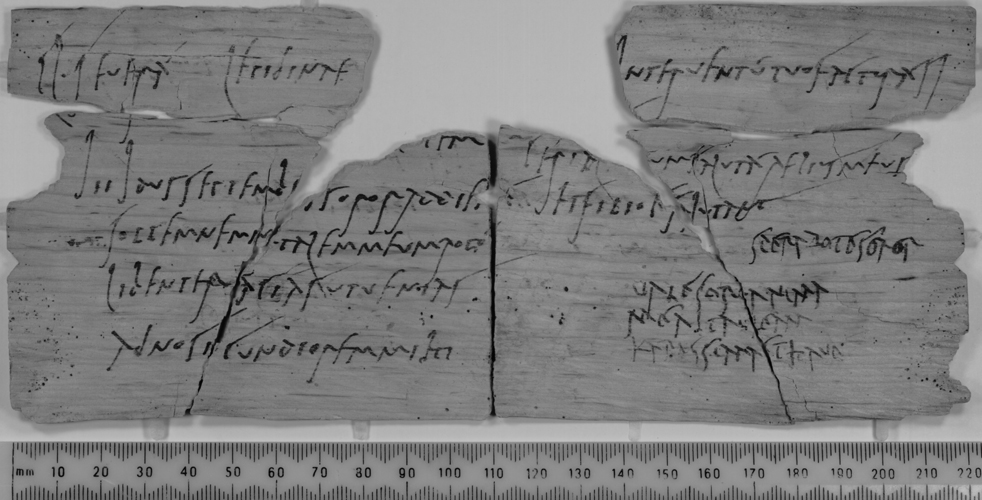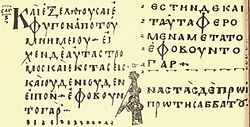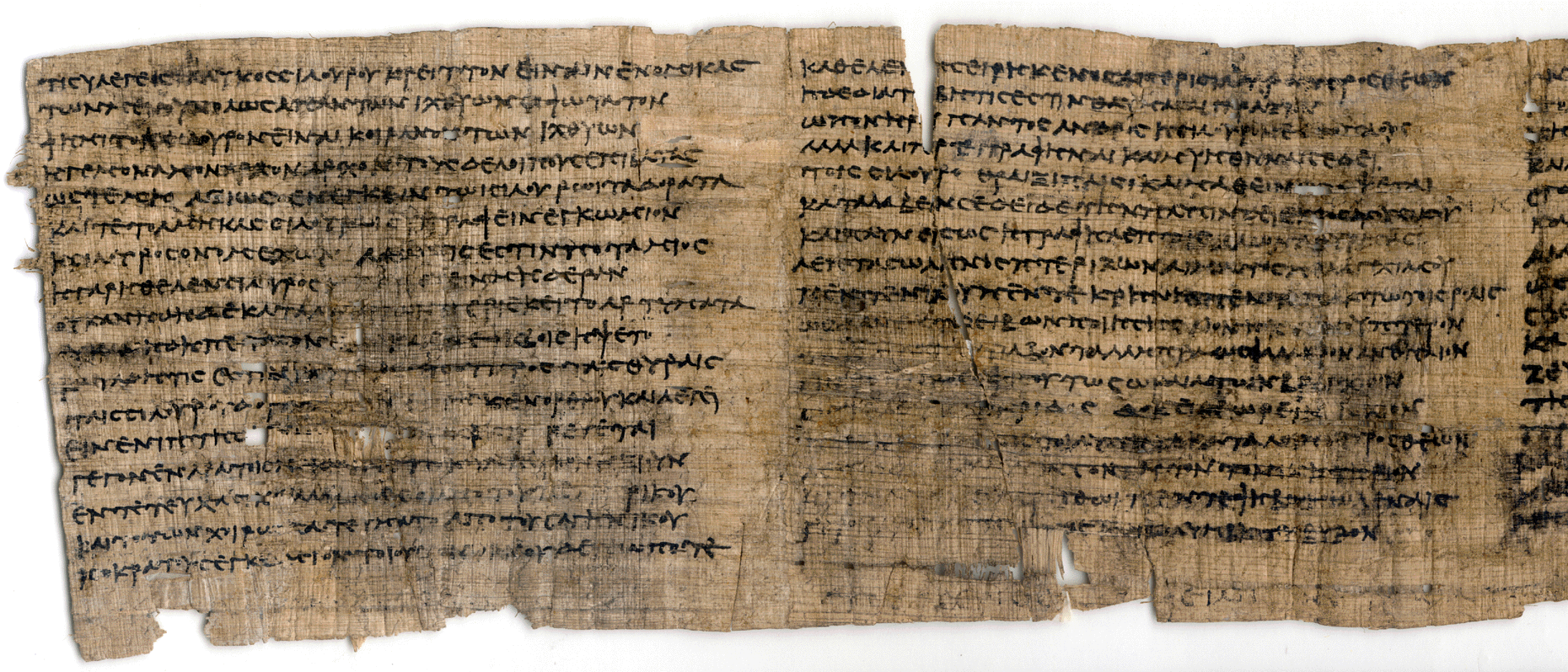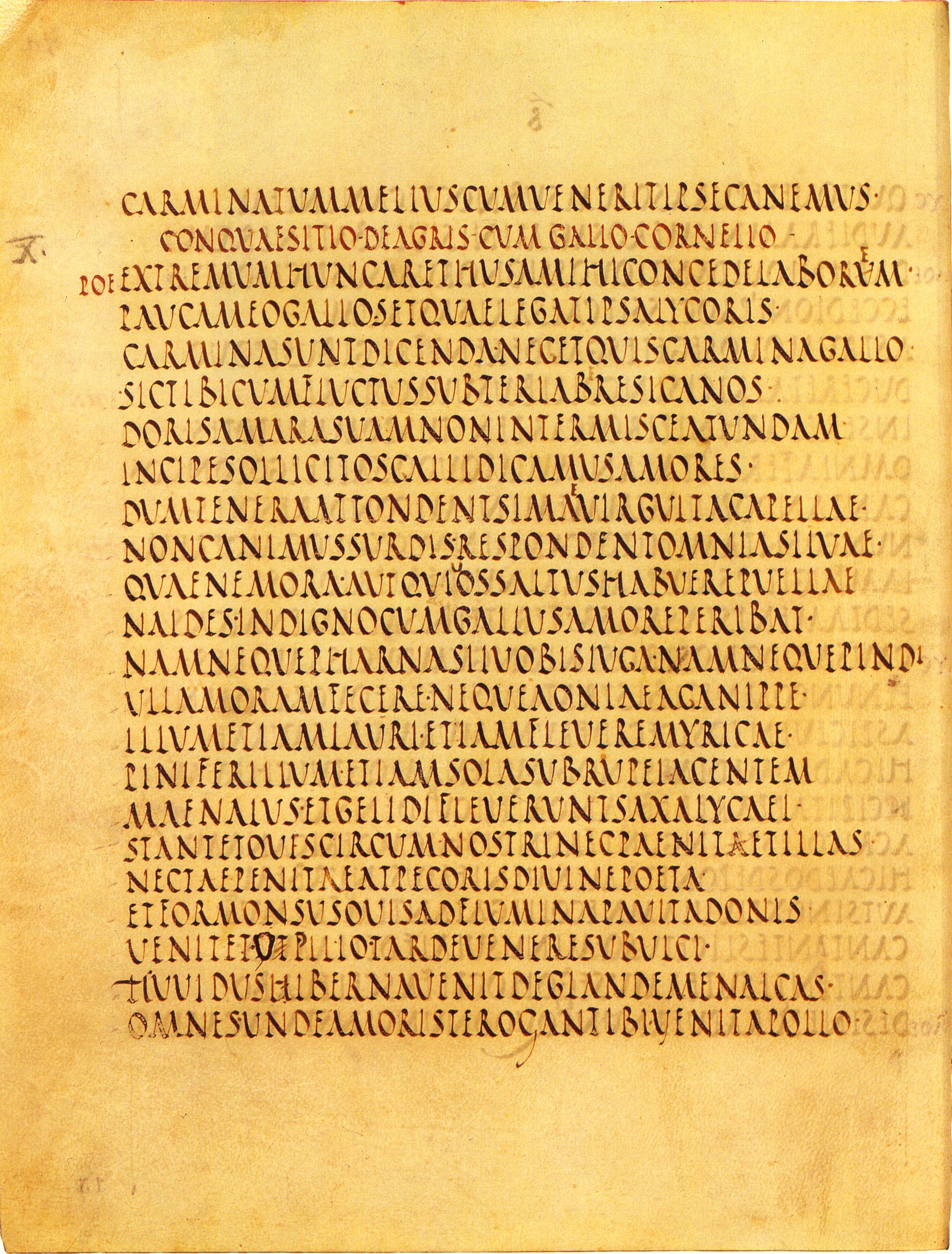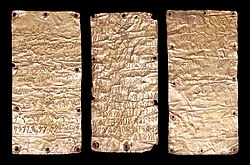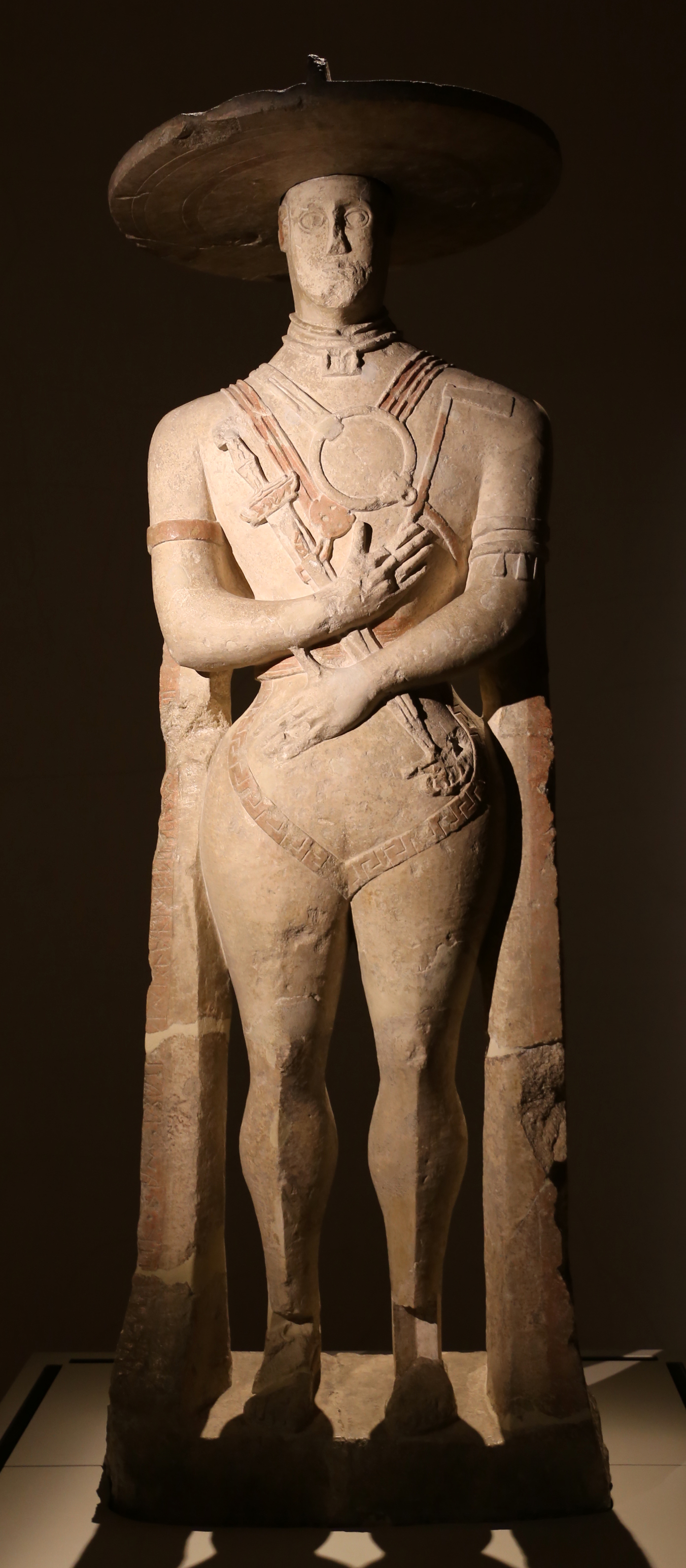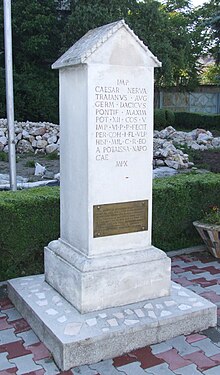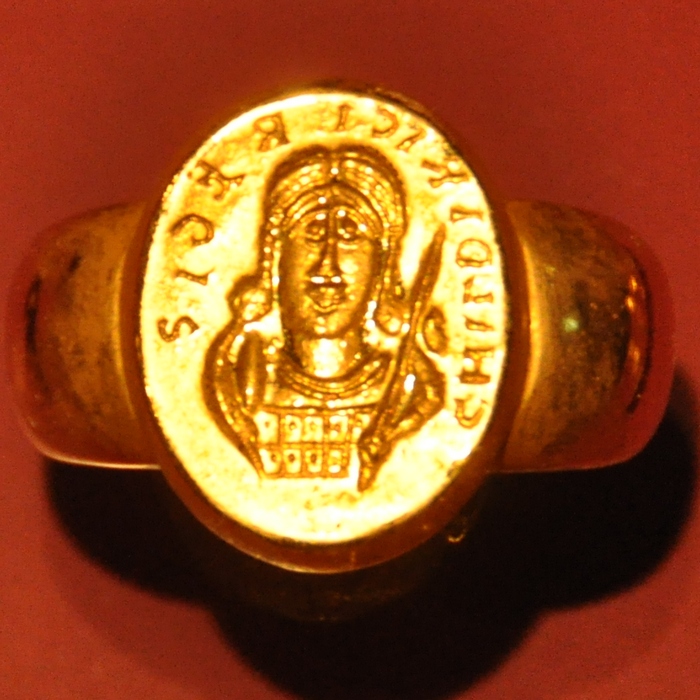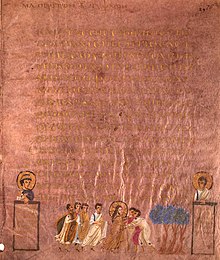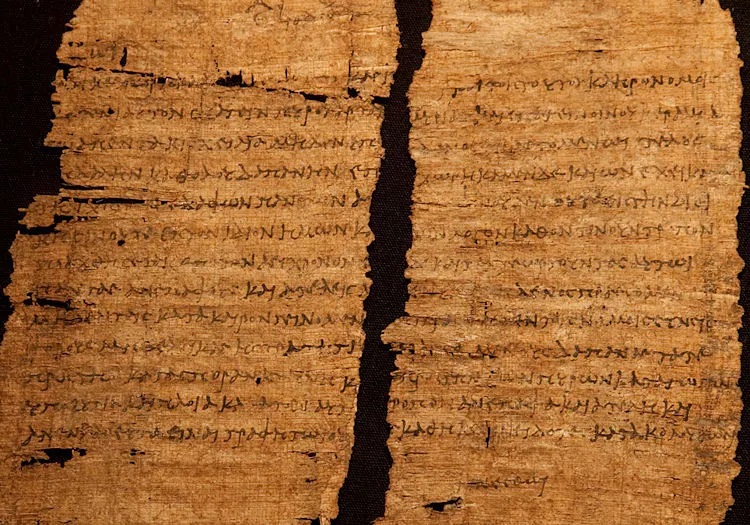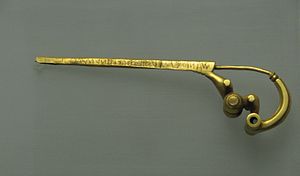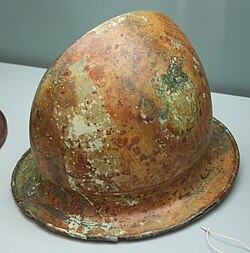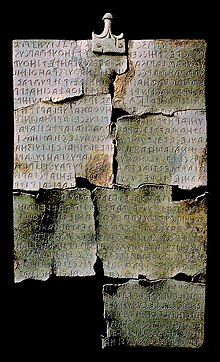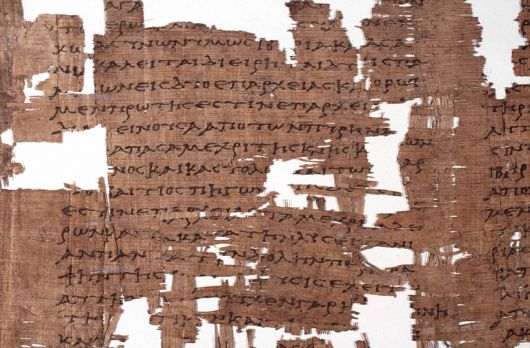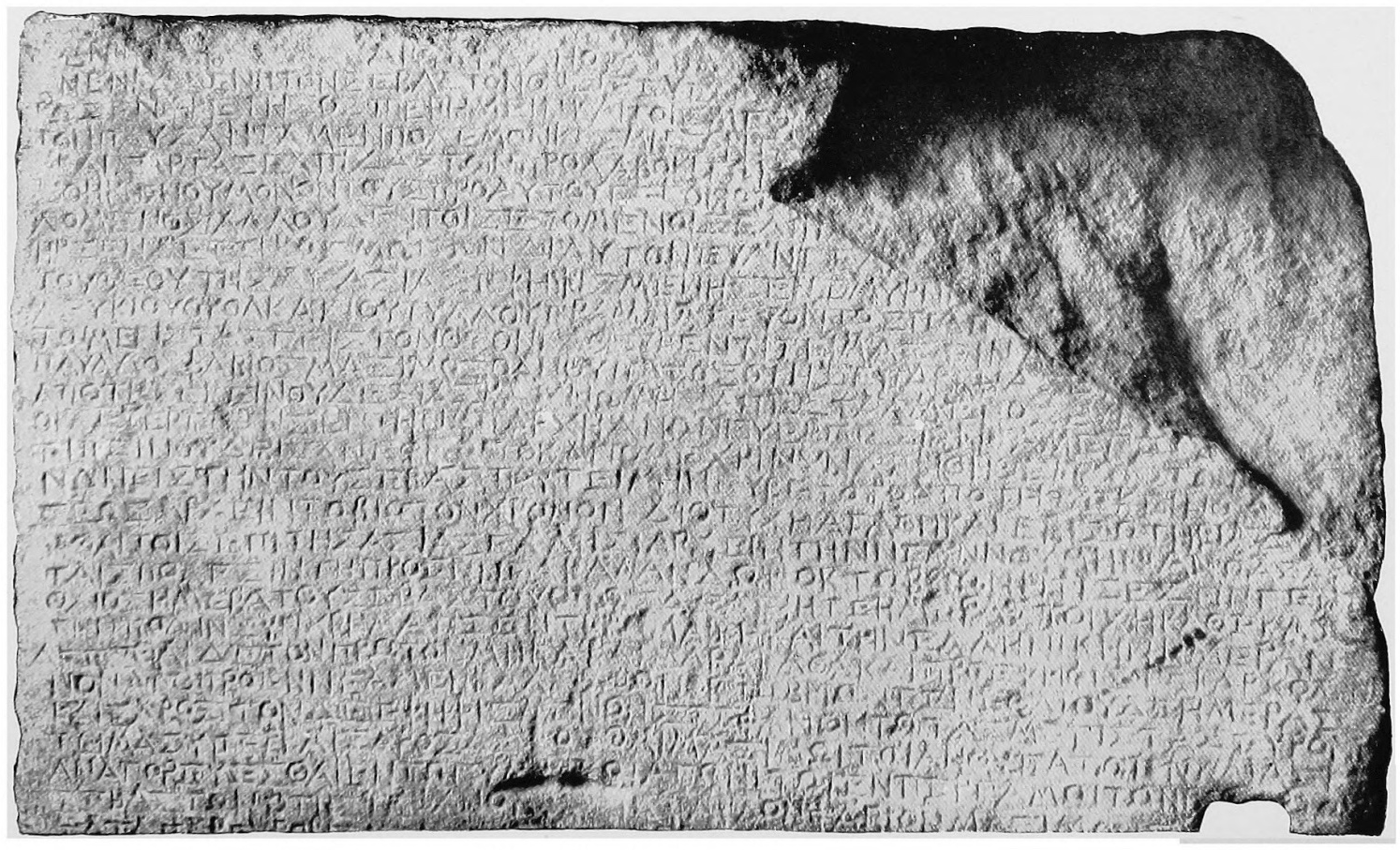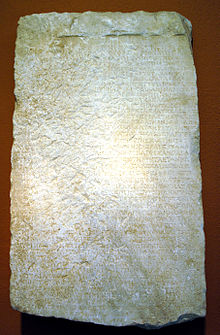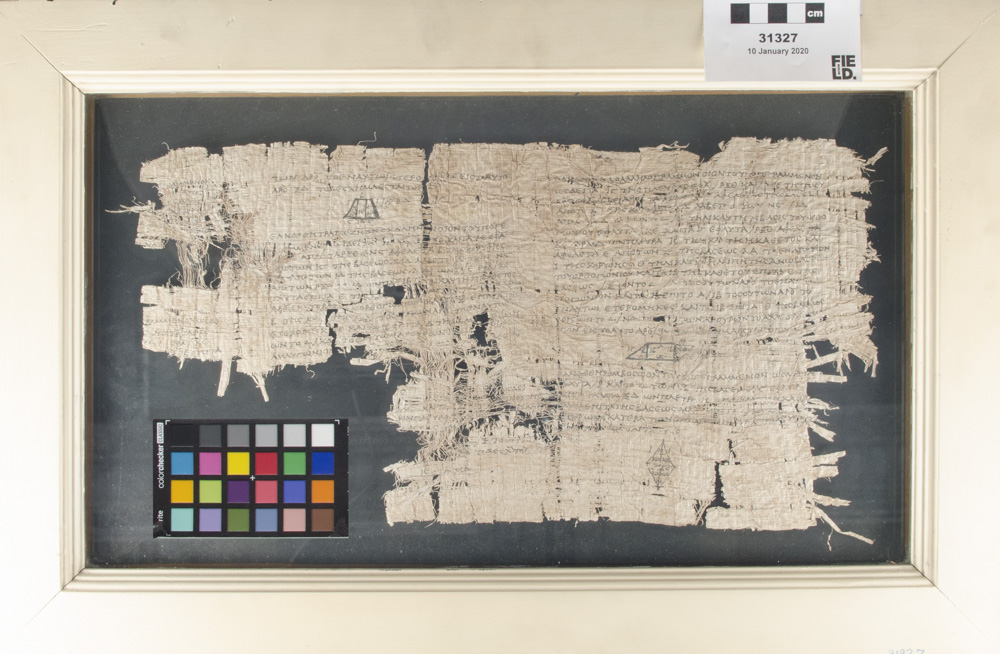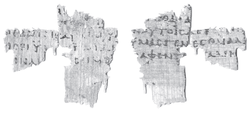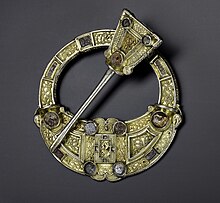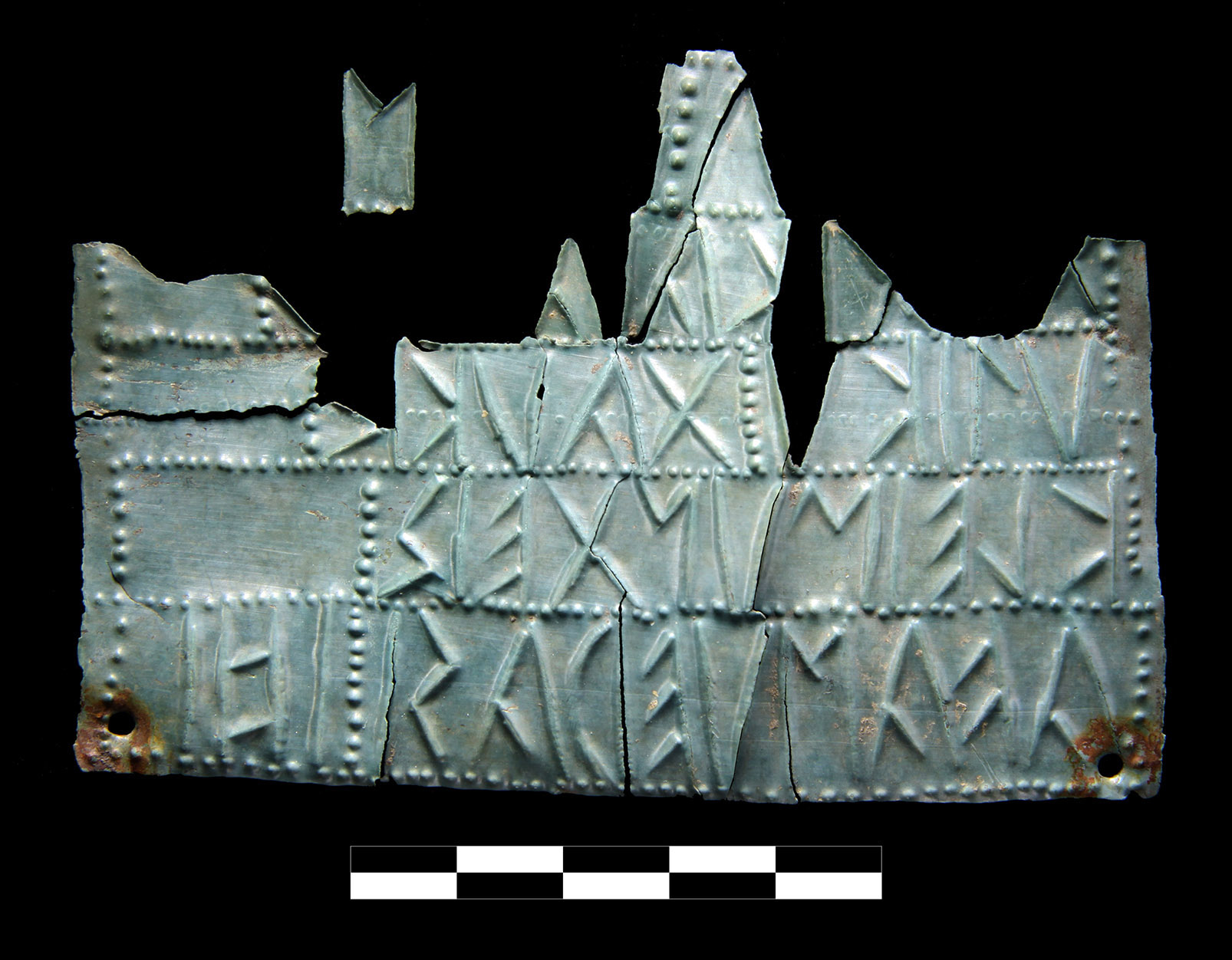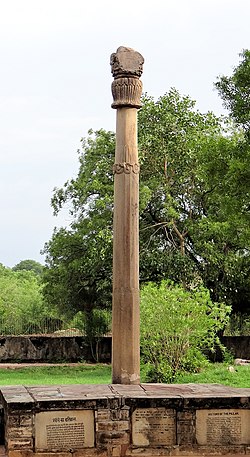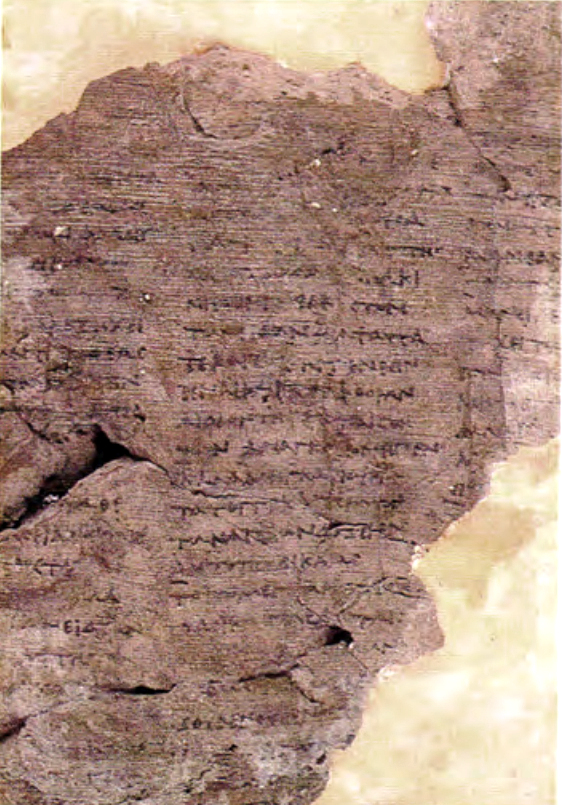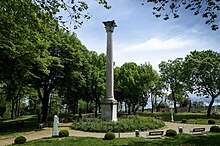Liber Linteus
The Liber Linteus (TM 69133 ) is the longest surviving Etruscan text, and also the only one written on linen. Although this seems an unusual writing surface, it actually was the standard material for Etruscan books, as contemporary representations demonstrate. That this book was preserved, is because it was at some time cut up and reused to wrap an Egyptian mummy. This mummy was acquired in 1848 during a road trip by a Croatian officer, in Alexandria. He took the mummy home and exhibited it in a corner of his sitting room, and at some stage he removed the wrappings. After his death in 1859, his brother inherited the mummy and its wrappings, and in 1867 donated it to the archeological museum in Zagreb, where it is still kept today. The script was examined by Budge, who initially thought the signs were Egyptian hieroglyphs, later that they were an Arabic transliteration of the Book of the Dead. Only when the text was brought to Vienna in 1891, did the orientalist Kroll realize that the alphabet was Etruscan.
The text itself cannot be translated completely because Etruscan is still largely undeciphered. It is nonetheless clear that the twelve columns contain a calendar written around the middle of the 3rd century BC, probably in the area around Lake Trasumeno.



